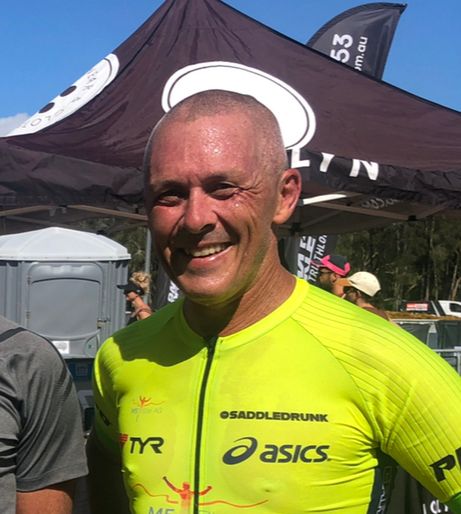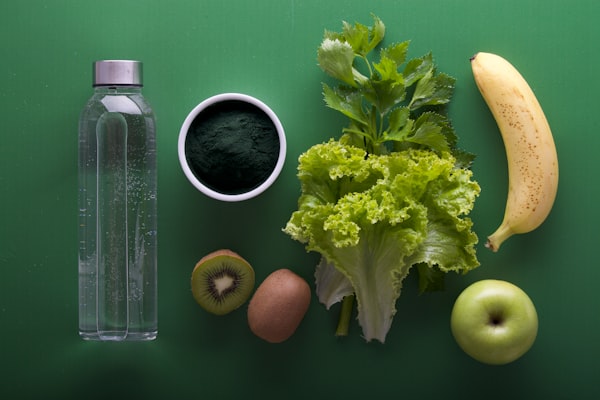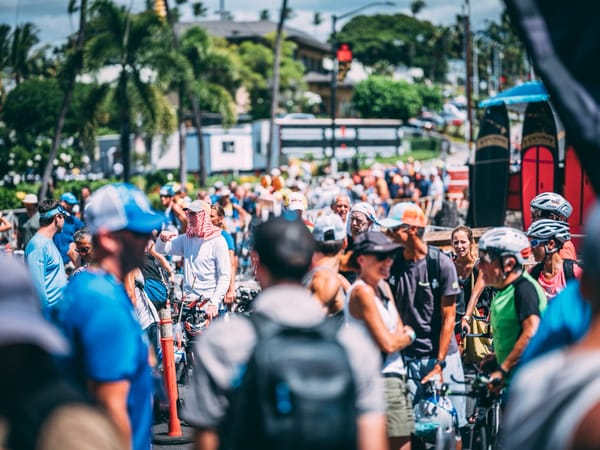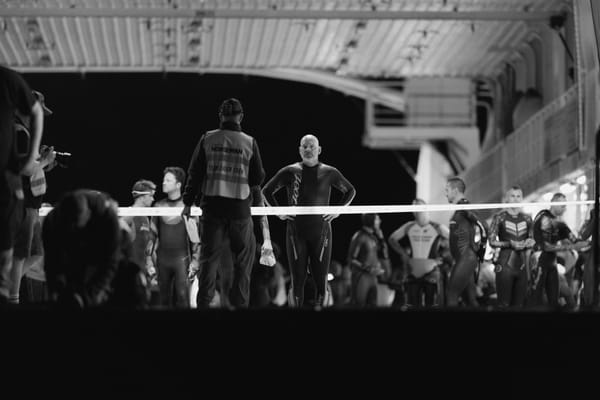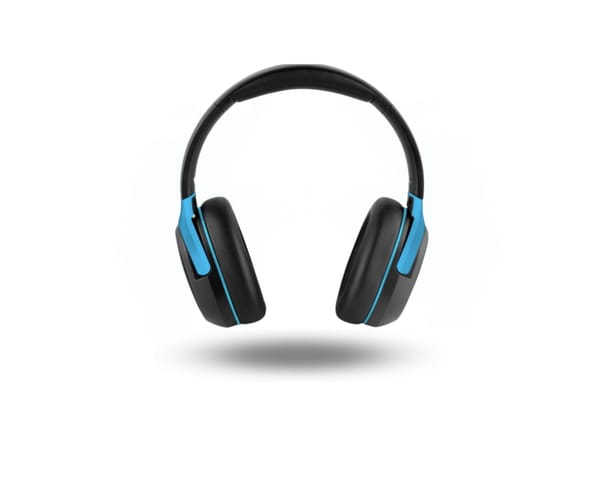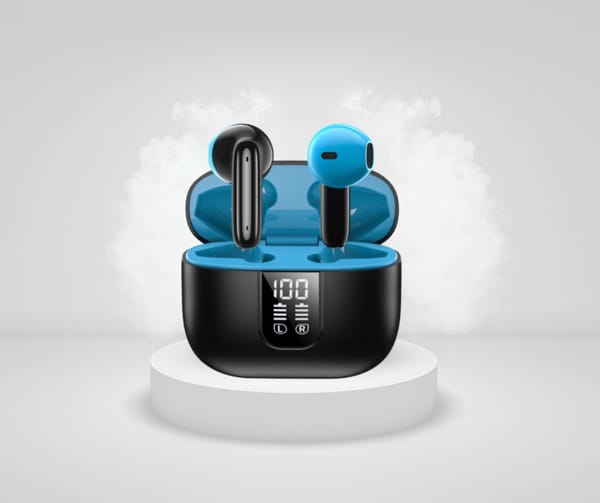Preparing for your race nutritionally doesn’t start two-to-three days out from competition. It starts in your daily, weekly and monthly training leading into the event by practising sound nutritional methods to improve your body’s ability to train, recover, fight infection, metabolise fat and spare muscle glycogen.
Like anything else you do, the more you do this, the better you (and your body) become at doing it.
So, before you start contemplating race day nutrition go back and read my previous article – Sports Nutrition 101. Once you’re doing a good job of that – read on. Otherwise you’re putting the horse before the cart, and subsequently, doing yourself a disservice, both from a performance and health perspective.
Sorted? Great, let’s move on.
Carbo vs Garbo-Loading
The concept of carbohydrate loading is pretty popular among triathletes prior to competition. There are, however, a couple of problems associated with this: (i) sprint distance triathletes think they have to consume inordinate amounts of carbohydrate (CHO) for an hour long race like their ironman counterparts and (ii) some people don’t get the difference between ‘carbo’ and ‘garbo’ loading.
Remember carbo-loading will not help you go faster – all it will do is sustain your speed for longer. Secondly, carbo-loading is more than attending the pre-race pasta party and eating a big plate of pasta the night before the race, and it certainly doesn’t mean gorging yourself with food for the entire week leading into a race.
As you taper, and your training load decreases leading into a race, so too does your energy requirement. Many athletes make the mistake of loading up way too early for competition. During a taper week, you also need to taper your energy intake to avoid unwanted weight gain immediately prior to racing. Depending on the person, the event you’re training for and your background, to adequately fill muscle glycogen stores – carbohydrate stored in the muscle – you’ll need between seven-to-12-grams of carbohydrate per kilogram body weight for 24-to-72 (at most) hours prior to competing.
For sprint and Olympic distance triathlons, simply tapering your training leading into competition and consuming six-to-eight-grams of carbohydrate per kilogram body weight for 24 hours before the race is enough to normalise your muscle glycogen stores and for an event of that duration.
As race distances get longer (e.g. half ironman and ironman distance), the amount of CHO consumed needs to be increased along with the duration of the loading phase (i.e. 10-to-12-grams of carbohydrate per kilogram body weight for 48-to-72 hours).
Day Of Eating And Competing
Here in Australia most triathlons start bright and early which often means people are tempted to sleep in a little longer and skip breakfast before the race.
Big mistake!
The only fuel source your brain uses is glucose, which, during the night, it gets from the breakdown of glycogen from the liver. Breakfast restocks your liver glycogen stores to offset the chance of cracking due to low blood sugar levels. It’s therefore crucial to eat a pre-race meal in order to top up both liver and muscle glycogen stores.
A pre-race meal should contain one-to-two grams of carbohydrate per kilogram body weight and should be consumed from about 90 minutes to 2.5 hours before racing. Ideally, the meal should be low in fat and fibre, familiar and carbohydrate-rich with only moderate levels of protein present. Some people actually find appropriately formulated liquid meal supplements easier to handle than solid foods. The key to any of this is to have practised it in training well before race day. You really don’t want, or need, any surprises on race-day. Some suggestions? As mentioned previously, liquid meal supplements (e.g. Sustagen Sport) or a combination of white toast, jam/honey, sports bars, bananas and fruit juice are all great pre-race meal choices.
Up to about 60-to-90 minutes before the event starts you can keep sipping a sports drink and then, within an hour of the race, switch to plain water to make sure your fluid levels are optimised.
Meeting Your Fluid And Energy Requirements On Race Day
Eating and drinking during longer events (and training sessions) is essential to keep your muscles fueled and your sweating mechanism functioning to avoid over-heating. Practising this during training (at race pace) is equally essential, as it prepares you both physiologically and psychologically for the task at hand come race day. If you don’t practice this in training, and then try to do it on race day, you are bound for disaster.
During sprint and Olympic-distance triathlons it’s not necessary to eat solid foods (e.g. sports bars), but you may choose to do so. These events are typically conducted at a very high intensity (at or above your anaerobic threshold). It’s therefore often easier to rely on sports drinks or sports gels (and water), in order to meet your nutrition and hydration requirements during shorter events.
However, once you step up to longer events where, you’re competing for three-to-10 plus hours, physically eating to offset the feelings of hunger becomes more common practice. For the unprepared or poorly informed it can also be a recipe for disaster.
The amount of carbohydrate required will vary depending on the size of the athlete and distance being raced. With half iron-distance events aim at consuming between 40-to-60 grams of CHO per hour – smaller female athletes will get away with lower levels of ingestion. As you get out to iron-distance CHO intake increases to around one-to-1.5-grams per kilogram of optimal body weight.
I say optimal body weight, that is, if you should weigh 70-kilograms and are 10-kilograms overweight, and then try to ingest 80-grams of CHO an hour, you’ll end up in all sorts of trouble with stomach complaints. To put you in the ballpark, the upper limits of CHO consumption are 70-to-100 grams per hour; beyond this, the gut simply won’t clear faster enough, then will close down and you’ll end up with stomach problems.
Even at these levels of consumption you will need to have practised it in training over the weeks coming into the event – and at race pace.
Most athletes will be able to achieve these goals on the bike. It is hard to eat while you swim – in case you hadn’t noticed – so once you hit the bike start eating/drinking immediately. As the gut is relatively stable on the bike, compared to jiggling around on the run. Consider using white bread sandwiches (no margarine, butter or crusts), fruit bars, sports bars, bananas and sports gels.
The keys are;
- to have practiced your race day menu in training at race pace
- make sure you’re meeting your CHO needs
- be conscious to consume adequate fluid
Once the run rolls around, it becomes a little more challenging to meet your CHO needs largely because of the jiggling factor aforementioned. Your ideal scenario for the run is to stay with appropriately formulated sports drinks and gels. They offer the fluid, CHO and electrolytes necessary to fuel your performance, whereas solid food can pose some problems if the concentration of energy in the stomach gets too high, which can cause it to close down, resulting in stomach problems. Remember, just because something is in your stomach it doesn’t mean your body has processed it.
Use your training sessions to practise your race-day plan. Try to match your fluid losses against your hydration plan, but don’t over do it. Recent scientific research suggests that ironman competitors drink more than they need, particularly those athletes taking longer to complete the event and/or competing in cooler environments and this can result in the potentially fatal malady hyponatremia or low plasma sodium.
Sure, there’s a lot to know and the above speaks in generalities. This is because I’m trying to get the central message across to pre-plan! Those of you that wish to take this to the next level and remove the guesswork should engage the services of a well-versed sports dietitian and/or exercise physiologist, and work through this in a systematic and logical manner.
It will be money well spent and remove one of most common pitfalls experienced by triathletes competing at all distances.
